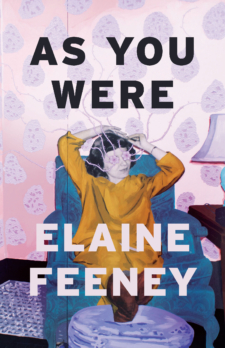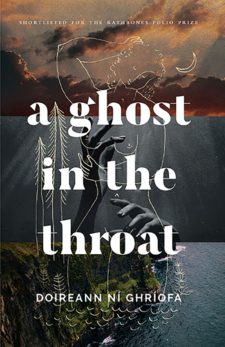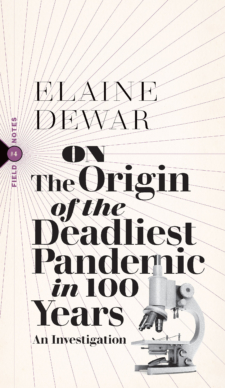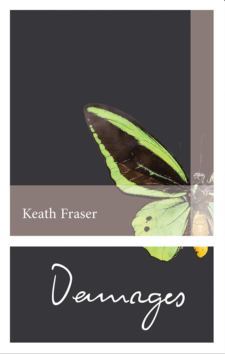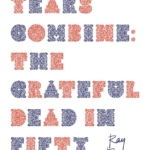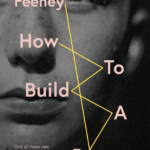Description
Longlisted for the 2023 Booker Prize • Shortlisted for the 2023 An Post Irish Book Awards Novel of the Year • One of the Globe and Mail‘s “Sixty-Two Books to Read This Fall” • One of the Globe 100’s Best Books of 2023 • A New Yorker Best Book of 2023 • A NYPL Book of the Day
Jamie O’Neill loves the colour red. He also loves tall trees, patterns, rain that comes with wind, the curvature of certain objects, books with dust jackets, rivers, cats, and Edgar Allan Poe. At age thirteen, there are two things he wants most in life: to build a Perpetual Motion Machine, and to connect with his mother, Noelle, who died when he was born. In his mind, these things are intimately linked, and at his new school, despite the daily barrage of bullies and cathedral bells, he meets two teachers who might be able to help him, though each struggles against inertias of their own.
How to Build a Boat is the story of how one boy’s irrepressible dream finds expression through a community propelled by love out of grief. Lyrical and compassionate, it’s a novel about the courage of conviction and the power of the imagination to transform—and how sometimes the best way to break free of old walls is to build something beautiful within them.
Praise for How to Build a Boat
“The interweaving stories of Jamie, a teenage boy trying to make sense of the world, and Tess, a teacher at his school, make up this humorous and insightful novel about family and the need for connection. Feeney has written an absorbing coming-of-age story which also explores the restrictions of class and education in a small community. A complex and genuinely moving novel.”
—The Booker Prize 2023 judges
“Atmospheric […] Feeney’s prose is both careful and relaxed—detailed in its description of place and character and of the effortful human urge to find order in the natural world; casual in its approach to storytelling.”
—Sophie Ward, New York Times
“This tender novel, which was longlisted for the Booker Prize, follows a boy as he works to build a perpetual motion machine, which to him is not just an engineering project, but a way to get closer to the mother he never knew.”
—New York Times
“The Irish novelist and poet’s second novel centres on a neuro-atypical boy called Jamie as he dreams of creating a perpetual-motion machine to connect with his mother, who died giving birth to him. When that proves untenable, a kindly shop teacher at his school gets him to help build a currach—a traditional Irish boat that will usefully serve as both vessel and metaphor.”
—Globe and Mail
“Feeney’s titular boat, a handcrafted currach technically, features prominently in the novel’s final pages, and damned if I wasn’t wiping tears and holding back sniffles as the thing floated downriver. […] Fumbling but continuing to strive to give life’s terminal messiness some shape, Feeney’s trio [of characters] captivate with their everyday heroism of muddling though; they ask important questions and make do with provisional answers.”
—Toronto Star
“A wonderful book that earned its rightful place on this year’s Booker Prize longlist.”
—Minneapolis Star Tribune
“Feeney’s skill at interweaving characters, at once as simple and complex as the currach, make for an enjoyable read.”
—Winnipeg Free Press
“Harrowing and brilliant.”
—New York Magazine
“Elaine Feeney’s new novel, How to Build a Boat, concerns how families come into being, stay together and come apart.”
—Times Literary Supplement
“One of those rare books that leaves you feeling less lonely. An uplifting tale of community, healing and the small connections that can change a life. A gorgeous gift of a novel, hopeful and full of humanity.”
—Douglas Stuart, Booker Prize-winning author of Shuggie Bain
“In her second novel after her 2020 debut As You Were, Irish writer Elaine Feeney […] creates real, fiercely believable people, the kind you will never want to forget. […] It is a privilege to read such a novel, and it richly deserves its place on this year’s Booker longlist. It is suffused with generosity, wisdom and understanding.”
—Financial Times
“How to Build a Boat […] is a heart-rending and delightful voyage in the company of 13-year-old Jamie O’Neill and his currach. The author Elaine Feeney has a poet’s way with words and uncanny understanding of human frailty.”
—The Guardian
“The author’s skill at laying bare her characters’ anxieties gave this book an intimacy I wasn’t expecting, while at the same time taking a sharp look at issues of class.”
—Zoomer
“Feeney has a genius for showing us the anxieties of each character … lovely, sensitive, intelligent.”
—The Miramichi Reader
“This is a book that should be read by every child and adult who is convinced he doesn’t ‘fit in.’ A book whose allusions and concerns broaden our view of the world.”
—Arts Fuse
“Absolutely gorgeous novel: a post-modern fairytale, feels like, a parable of togetherness, and the writing so achingly spare. […] I loved every word.”
—Conor O’Callaghan, author of We Are Not in the World
“Feeney has crafted a novel—from setting to voice—that manages to feel completely fresh yet still timeless, full of human frailties and failings, yet covered with goodwill.”
—Shelf Awareness
“[Feeney] has a beautiful, crystal-clear prose style that penetrates to the emotional core of her three main characters, whose hurts and desires are achingly rendered on the way to a quietly triumphant ending.”
—Publishers Weekly
“How to Build a Boat is a novel about the pressure that people face to mold to the expectations of others—and the relief of being able to shove that pressure aside.”
—Foreword Reviews
“The novel is an intensive probe of contemporary Irish society; the island’s culture of shame and silence is picked apart […] as is the continuing influence of the Catholic church. […] Feeney has insights into boyhood and, more importantly, has written a great boy to help her tell them.”
—Kirkus Reviews
“[Feeney’s] impressionistic second novel follows a pupil and teacher as they navigate the social codes of rural Ireland.”
—The Guardian
“Elaine Feeney’s writing … lights up with that brilliant combination of hilarity and tenderness.”
—Electric Literature
“Lyrical, compassionate … the book sails to a tender and almost heartbreaking crescendo of hope forged through honesty and imagination.”
—Daily Mail
“A beautiful meditation on love.”
—Irish Times
“A beautifully-written, tenderhearted story.”
—RTE Ireland
“Poignant, poetic.”
—Irish Examiner
“Feeney’s debut novel As You Were won her legions of fans—Margaret Atwood, Douglas Stuart and Marian Keyes among them. Her second novel … will only win over more.”
—I Newspaper
“Elaine Feeney’s second novel is a beautifully told story that features a memorable cast of characters that ring true.”
—Business Post Ireland
“How to Build a Boat conjures images of rural Ireland and the Irish sea. It explores how motherhood shapes people in many ways. […] Fractured lives […] come together beautifully in this novel that explores humanity, love, and grief.”
—Hindustan Times
“Elaine Feeney’s honest prose pilots this creative boy and his whole Irish community toward renewal.”
—Christian Science Monitor
Praise for As You Were
“The novel reads almost like a humorous screen adaptation of an illness memoir, its gaze trained more on the lived experience inside a hospital than on looming death.”
—New York Times
“I read this in one gulp! FunnySadCuttingBadHistoryElatingLyrical (new word). #Ireland #hospitals um what else?”
—Margaret Atwood on Twitter
“[A] brilliant debut … Never sentimental, and full of well-crafted dialogue and rich descriptions … This powerful work perfectly balances tragedy and hope.”
—Publishers Weekly (starred review)
“In a novel that paints a picture of modern Ireland that isn’t by Sally Rooney, women in an oncology ward come to terms with secrets, illnesses, and how to deal with their families through text and emoji-speak and existential humor. Perfect for Sad Girl Fall.”
—Nylon
“A mighty, turbulent firestorm of a book, with a pulsing, rhythmic narrative voice. A compelling cast of characters with pitch perfect dialogue, it is tender, nuanced, forensically controlled and thrillingly unrestrained.”
—2021 Dalkey Emerging Writer Award Jury


